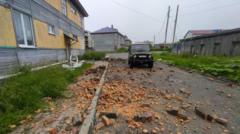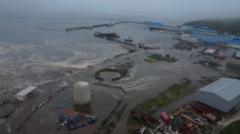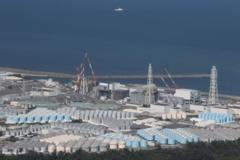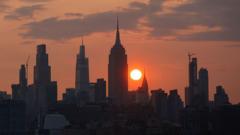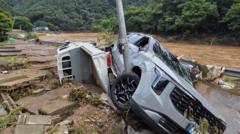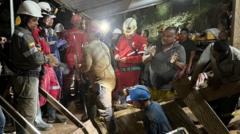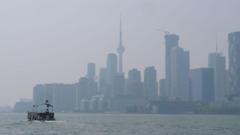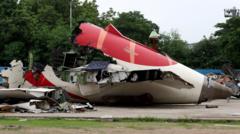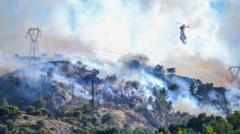In response to a tsunami warning, many Hawaiians have evacuated coastal regions as waves begin to impact islands, while officials ensure safety measures are in place.
Hawaiians Evacuate Coastal Areas as Tsunami Threat Looms

Hawaiians Evacuate Coastal Areas as Tsunami Threat Looms
Residents flee to higher ground following a tsunami warning triggered by a strong earthquake near Russia.
Hawaiians are taking urgent action to safeguard themselves as Tsunami warnings loom over the state following a significant earthquake off the coast of Russia. Residents have evacuated from coastal zones, responding to alerts issued by the Pacific Tsunami Warning Center, which reported waves reaching several feet on the islands of Maui, Oahu, and Hawaii by Tuesday evening.
Governor Josh Green advised those living in low-lying areas to remain calm but seek higher ground, expressing a hopeful outlook as no major waves had yet been observed. Roads across the islands have become congested as locals scramble to leave their homes. On Maui, which faced devastating wildfires two years ago, residents are keenly aware of the potential dangers and have begun moving upwards.
The situation has initiated precautionary measures across various locations on the West Coast, including California and Alaska, which are under an advisory indicating that dangerous currents and waves could occur, though severe flooding is not forecasted. Notably, seismologist Dr. Lucy Jones indicated that while harbor and waterfront property damage is possible in Hawaii and perhaps California, catastrophic loss of life is unlikely.
Amidst this atmosphere of alarm, individuals like David Dorn, a resident of Kihei, Maui, expressed a cautious approach, prioritizing safety over normal routines. Having lived through multiple tsunami warnings, he emphasized the importance of treating all alerts with seriousness. Dorn evacuated with his wife, taking precautions by relocating their valuables to a safe elevation in their home, while facing severe traffic complications.
Fellow residents echoed similar sentiments regarding the daunting traffic conditions, comparing it to rush hour in major metropolitan areas, and making last-second decisions about essential trips. As they prepare, shelters have opened, and water facilities have been shut down to mitigate potential damage.
Felicia Johnson, another long-time resident, found herself recalling a past evacuation ten years ago while packing her truck to move with her family to the mountains. Feeling the rising water levels, she described a sense of eerie familiarity and unease, reminiscent of the wildfires that recently ravaged their island, underscoring the anxiety of facing the unknown yet again.
As waves approach, the urgency grows among Hawaiians, who are keenly aware of both natural disasters and the need for preparedness in the face of nature's unpredictability.
Governor Josh Green advised those living in low-lying areas to remain calm but seek higher ground, expressing a hopeful outlook as no major waves had yet been observed. Roads across the islands have become congested as locals scramble to leave their homes. On Maui, which faced devastating wildfires two years ago, residents are keenly aware of the potential dangers and have begun moving upwards.
The situation has initiated precautionary measures across various locations on the West Coast, including California and Alaska, which are under an advisory indicating that dangerous currents and waves could occur, though severe flooding is not forecasted. Notably, seismologist Dr. Lucy Jones indicated that while harbor and waterfront property damage is possible in Hawaii and perhaps California, catastrophic loss of life is unlikely.
Amidst this atmosphere of alarm, individuals like David Dorn, a resident of Kihei, Maui, expressed a cautious approach, prioritizing safety over normal routines. Having lived through multiple tsunami warnings, he emphasized the importance of treating all alerts with seriousness. Dorn evacuated with his wife, taking precautions by relocating their valuables to a safe elevation in their home, while facing severe traffic complications.
Fellow residents echoed similar sentiments regarding the daunting traffic conditions, comparing it to rush hour in major metropolitan areas, and making last-second decisions about essential trips. As they prepare, shelters have opened, and water facilities have been shut down to mitigate potential damage.
Felicia Johnson, another long-time resident, found herself recalling a past evacuation ten years ago while packing her truck to move with her family to the mountains. Feeling the rising water levels, she described a sense of eerie familiarity and unease, reminiscent of the wildfires that recently ravaged their island, underscoring the anxiety of facing the unknown yet again.
As waves approach, the urgency grows among Hawaiians, who are keenly aware of both natural disasters and the need for preparedness in the face of nature's unpredictability.



